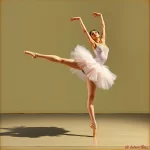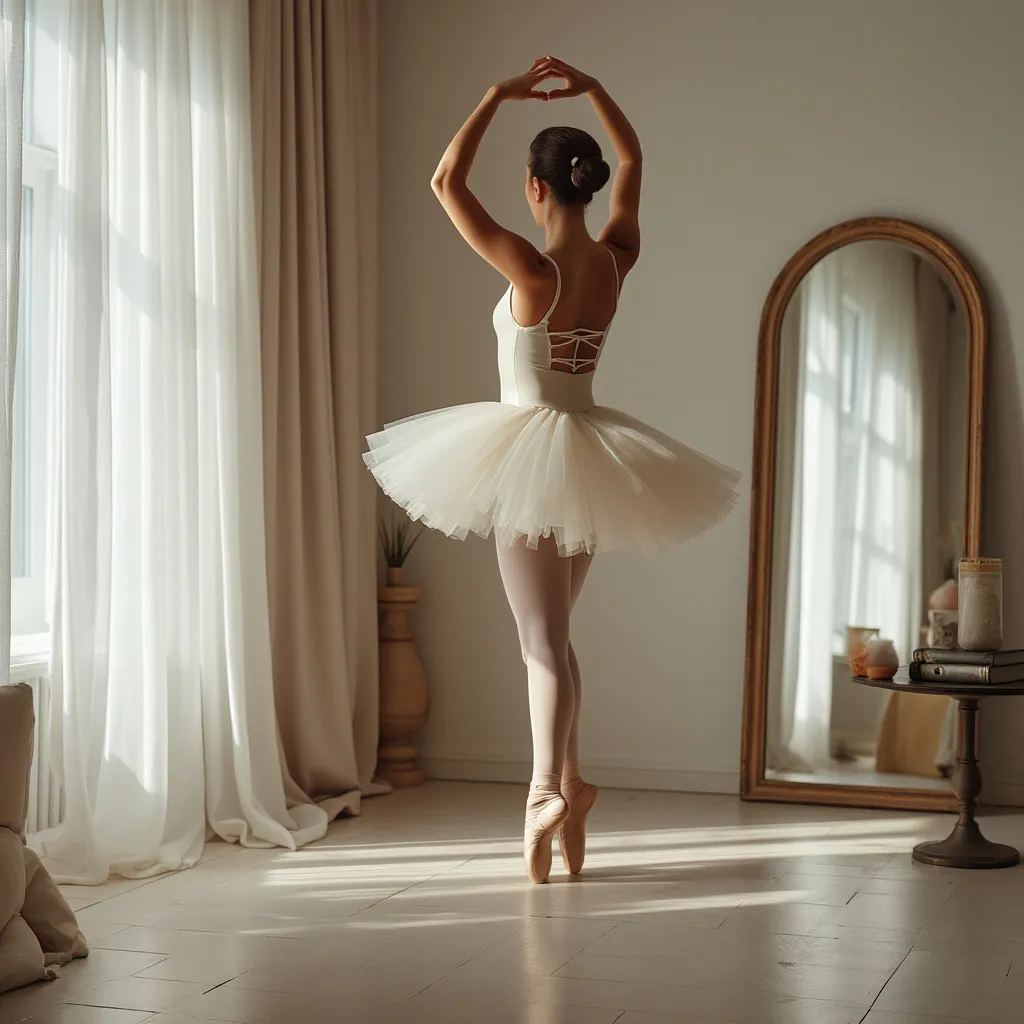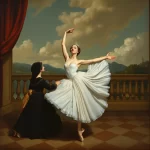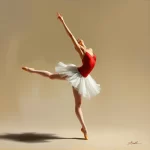Ballet in the 20th Century: The Rise of Modern Ballet

Introduction
Ballet, a classical dance form with roots tracing back to the Italian Renaissance, has undergone significant transformations over the centuries. The 20th century, in particular, marked a pivotal era in the evolution of ballet, characterized by the rise of modern ballet. This period saw the blending of traditional techniques with innovative movements, leading to the creation of a more expressive and diverse art form. This article delves into the history, key figures, and defining characteristics of modern ballet in the 20th century, highlighting its impact on the world of dance.
The Historical Context of Ballet
The Origins of Ballet
Ballet originated in the Italian courts during the Renaissance and was later refined in France under the patronage of King Louis XIV. The establishment of the Académie Royale de Danse in 1661 formalized ballet as a professional art form. Over the centuries, ballet evolved into a highly technical and codified dance style, epitomized by the works of choreographers like Marius Petipa and composers like Pyotr Ilyich Tchaikovsky.
The Transition to Modern Ballet
The late 19th and early 20th centuries were a time of significant change in the arts, influenced by broader cultural movements such as modernism and the avant-garde. Ballet was no exception. Dancers and choreographers began to seek new ways to express contemporary themes and emotions, leading to the development of modern ballet. This new form of ballet broke away from the rigid structures of classical ballet, incorporating more naturalistic movements and innovative choreography.
Key Figures in Modern Ballet
Sergei Diaghilev and the Ballets Russes
One of the most influential figures in the rise of modern ballet was Sergei Diaghilev, a Russian impresario who founded the Ballets Russes in 1909. Diaghilev’s company brought together some of the most talented dancers, choreographers, and composers of the time, including Vaslav Nijinsky, Igor Stravinsky, and George Balanchine. The Ballets Russes revolutionized ballet by introducing bold, avant-garde productions that combined innovative choreography with striking visual and musical elements.
George Balanchine
George Balanchine, a Russian-born choreographer, is often regarded as the father of American ballet. After moving to the United States in the 1930s, Balanchine co-founded the New York City Ballet and developed a distinctive style known as “neoclassical ballet.” His choreography emphasized clarity, precision, and musicality, blending classical ballet techniques with modern sensibilities. Balanchine’s works, such as “Serenade” and “Agon,” remain staples of the modern ballet repertoire.
Martha Graham
While primarily known for her contributions to modern dance, Martha Graham also played a significant role in the development of modern ballet. Graham’s innovative techniques and expressive movements influenced many ballet choreographers, leading to a more fluid and dynamic approach to dance. Her collaborations with composers like Aaron Copland and set designers like Isamu Noguchi further enriched the artistic possibilities of modern ballet.
Defining Characteristics of Modern Ballet
Innovative Choreography
One of the hallmarks of modern ballet is its emphasis on innovative choreography. Unlike classical ballet, which adheres to a strict set of movements and positions, modern ballet allows for greater creative freedom. Choreographers experiment with new forms, structures, and dynamics, often drawing inspiration from contemporary themes and personal experiences. This has led to a more diverse and expressive range of balletic works.
Fusion of Styles
Modern ballet often incorporates elements from other dance styles, such as modern dance, jazz, and even folk dance. This fusion of styles creates a richer and more varied vocabulary of movement, allowing dancers to explore new ways of expressing themselves. The blending of different techniques also reflects the broader cultural exchanges and influences of the 20th century.
Emphasis on Expression
While classical ballet is known for its emphasis on form and technique, modern ballet places a greater focus on expression and emotion. Dancers are encouraged to convey complex feelings and narratives through their movements, often using more naturalistic and fluid gestures. This shift towards a more expressive style has made ballet more accessible and relatable to contemporary audiences.
Impact of Modern Ballet on the Dance World
Broadening the Audience
The rise of modern ballet has helped to broaden the audience for ballet, attracting people who may not have been interested in traditional classical ballet. The innovative and diverse nature of modern ballet productions appeals to a wider range of tastes and preferences, making ballet more inclusive and accessible.
Influence on Other Dance Forms
Modern ballet has also had a significant impact on other dance forms. The techniques and principles developed by modern ballet choreographers have influenced contemporary dance, jazz dance, and even hip-hop. This cross-pollination of ideas has enriched the dance world, leading to new and exciting forms of artistic expression.
Legacy of Innovation
The legacy of modern ballet is one of continuous innovation and experimentation. Choreographers and dancers continue to push the boundaries of what is possible in ballet, exploring new themes, techniques, and forms. This spirit of creativity ensures that ballet remains a dynamic and evolving art form, capable of reflecting and responding to the changing world around it.
FAQ
What is the difference between classical ballet and modern ballet?
Classical ballet is characterized by its strict adherence to traditional techniques and forms, such as the five basic positions of the feet and the use of pointe shoes. Modern ballet, on the other hand, allows for greater creative freedom and often incorporates elements from other dance styles. Modern ballet places a greater emphasis on expression and emotion, using more naturalistic and fluid movements.
Who are some of the most influential figures in modern ballet?
Some of the most influential figures in modern ballet include Sergei Diaghilev, George Balanchine, and Martha Graham. Diaghilev’s Ballets Russes introduced bold, avant-garde productions that revolutionized ballet. Balanchine developed a distinctive neoclassical style that blended classical techniques with modern sensibilities. Graham’s innovative techniques and expressive movements influenced many ballet choreographers.
How has modern ballet influenced other dance forms?
Modern ballet has had a significant impact on other dance forms, including contemporary dance, jazz dance, and hip-hop. The techniques and principles developed by modern ballet choreographers have enriched the vocabulary of movement in these other styles, leading to new and exciting forms of artistic expression.
What are some defining characteristics of modern ballet?
Modern ballet is characterized by its emphasis on innovative choreography, fusion of styles, and focus on expression and emotion. Choreographers experiment with new forms and structures, often drawing inspiration from contemporary themes. Modern ballet also incorporates elements from other dance styles, creating a richer and more varied vocabulary of movement.
Why is modern ballet important?
Modern ballet is important because it has helped to broaden the audience for ballet, making it more inclusive and accessible. It has also influenced other dance forms, leading to new and exciting forms of artistic expression. The spirit of innovation and experimentation in modern ballet ensures that it remains a dynamic and evolving art form, capable of reflecting and responding to the changing world around it.
Conclusion
The 20th century was a transformative period for ballet, marked by the rise of modern ballet. This new form of ballet broke away from the rigid structures of classical ballet, incorporating innovative choreography, a fusion of styles, and a greater emphasis on expression and emotion. Key figures like Sergei Diaghilev, George Balanchine, and Martha Graham played pivotal roles in this evolution, leaving a lasting impact on the world of dance. Modern ballet has broadened the audience for ballet, influenced other dance forms, and ensured that ballet remains a dynamic and evolving art form. As we move further into the 21st century, the legacy of modern ballet continues to inspire and shape the future of dance.




